
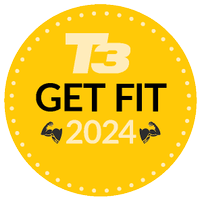
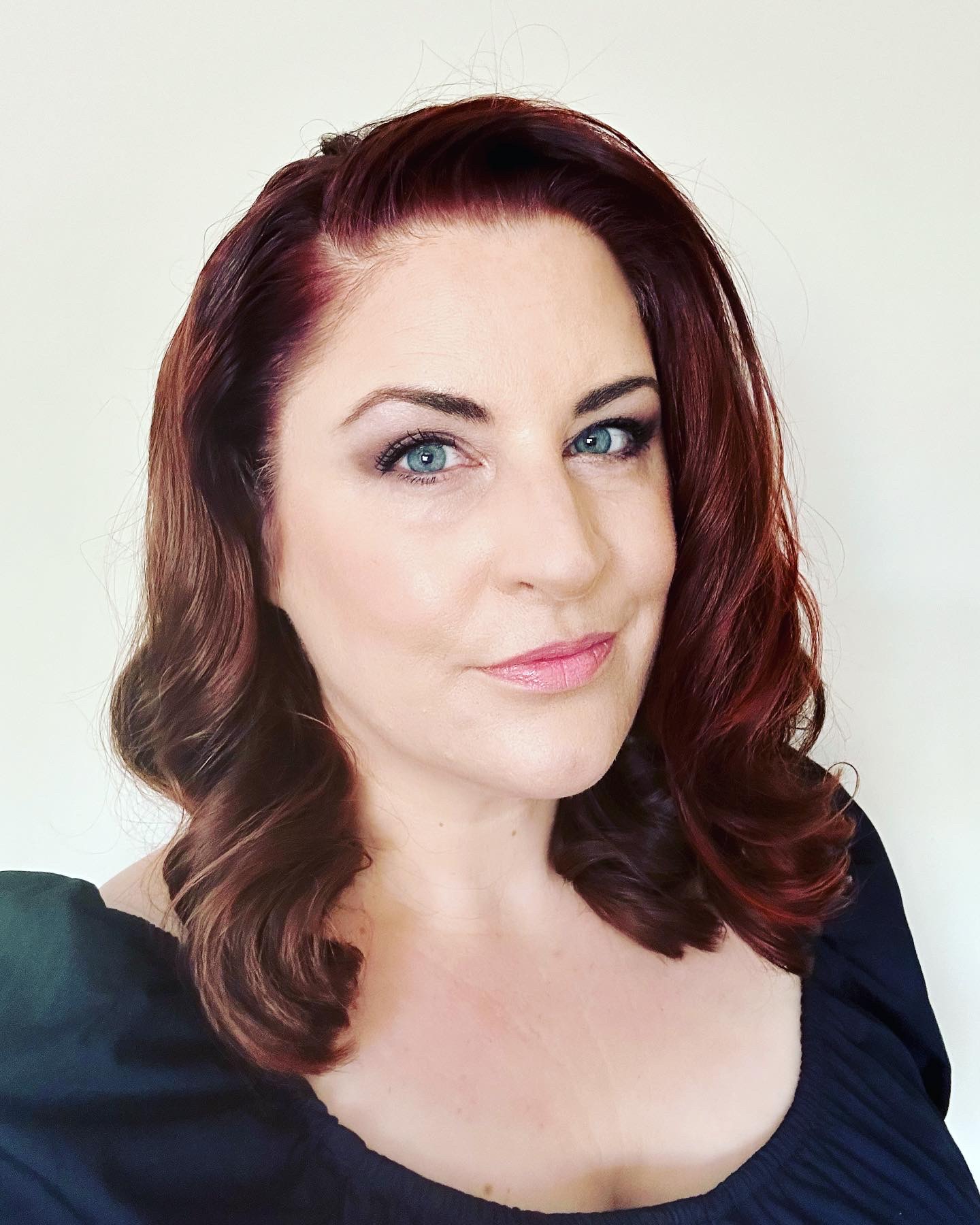
Want to get in silver screen-worthy shape, not just for summer, but for life? Step forward, Don Saladino, the PT who puts the ‘super’ into superhero bodies for some of the biggest names in Hollywood.
When it comes to body recomposition, if Don doesn't know about it, then it isn't worth knowing, as we recently discovered when we caught up with him in his swanky New York gym over Zoom.
So, if you really want to know the fitness, nutrition, and lifestyle secrets to owning a superhero physique that’s strong, healthy, lean, and ready for action at a moment’s notice, keep reading.
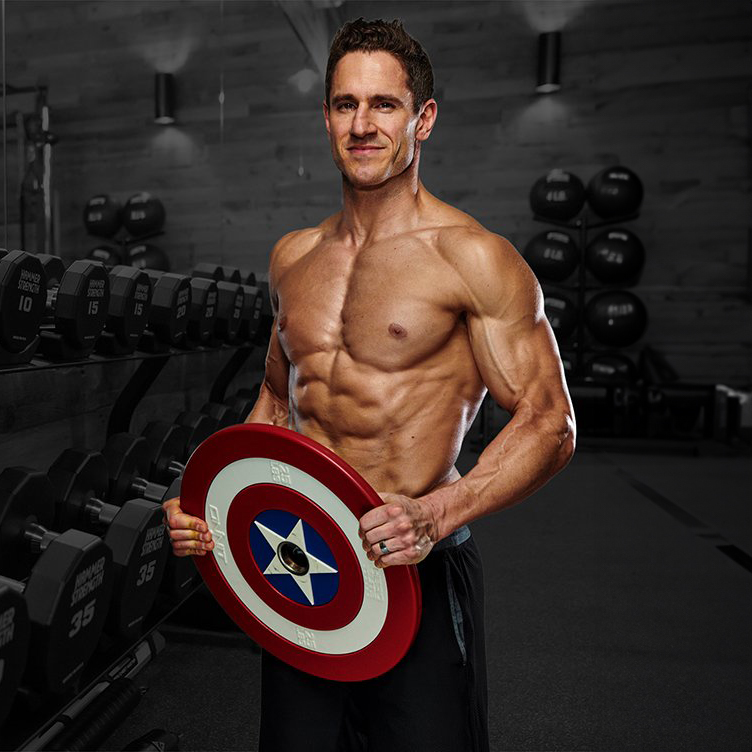
A-list trainer Don Saladino is an ambassador for the metabolism-hacking device Lumen. Known as the man who puts the ‘super’ into superhero bodies, past and present clients include Sebastian Stan, Anne Hathaway, Jake Gyllenhaal, Blake Lively, Hugh Jackman, Scarlett Johansson, and David Harbour. He has worked with Ryan Reynolds since 2009 and trained him for all three Deadpool movies.
Have a clear goal and understand the right way to achieve it
“The problem [with body recomposition] is that 99 percent of people don’t know what they want, so they turn around and say: ‘I want to lose 10lbs’, and I’m like ‘no you don’t, you just want to change your body composition,’” explains Saladino.
“Even actors tell me they need to be heavier or lighter for a role, and I say ‘no, you just have to look a certain way’, unless they need to fit into a specific suit, of course. The point is you should be focusing on achieving body recomposition and not necessarily thinking about what the scales say.”
The art of body recomposition and obtaining a superhero physique primarily involves gaining muscle and losing fat for a lean, ripped appearance, but Saladino believes achieving this kind of transformation doesn’t automatically require a drastic increase or decrease in weight.
A post shared by DON SALADINO (@donsaladino)
A photo posted by on
“I often say to clients, ‘What if I told you that I could snap my fingers right now and you could have the exact body that you wanted, but you’d be 10lbs heavier. Would you take that?’” he says. “And most of the time, people have to think about it, because even though they’d have the exact body they wanted, some people are afraid of the idea of being 10lbs heavier on the scales.
Sign up to the T3 newsletter for smarter living straight to your inbox
Get all the latest news, reviews, deals and buying guides on gorgeous tech, home and active products from the T3 experts
“When I’ve gotten women ready for movie roles, they’ve understood the importance of being strong and resilient,” he continues, “so we’ve fed their bodies the nutrition that is needed to be successful, but then we also trained them to be strong, and with that, their metabolisms burn a little hotter, and we can change their body composition.”
Resistance is definitely not futile
“Resistance training, in my opinion, is where you’re going to get the most bang for your buck,” states Saladino. “And that’s because when you have more muscle on the body, you become more resilient, and you have more body armour, and an increase in muscle mass can lead to an increase in metabolic rate and calorie burn, both during and after exercise, to help improve body composition and support weight loss efforts.
“That’s certainly the goal when training Ryan Reynolds with my Deadpool workout programme because his goals are to be strong and resilient, but he’s also got to have low levels of body fat. And I don’t want to say ‘body armour’ to scare women away because most women say they don’t want to get ‘bigger’. But it’s bulls**t because every woman needs to put on muscle.”
Saladino says he’s used similar programmes to his full Deadpool workout (external link) on both men and women to achieve incredible body recomposition results, and women should definitely not be afraid to lift weights, especially if they want lower body fat levels.
“Resistance training can be done with bodyweight, bands, dumbbells, kettlebells and barbells to create tension in the muscles and get them firing,” adds the PT. “Of course, some exercises are better than others, and I believe compound movements like squats and deadlifts are especially good for working more than one muscle group at a time. But equally, if someone is really good at doing bodyweight push-ups, and they want to tap into hypertrophy (increased muscle size), adding external weight is going to be very helpful.”
A post shared by DON SALADINO (@donsaladino)
A photo posted by on
Don’t judge your success by what the scales say
Saladino says that while using a set of scales to monitor your weight can be a useful tool when done occasionally, he believes they are often abused.
“A lot of people are living too much by what the scales are telling them, and they don’t realise that a lot of the weight your body can lose in the beginning isn’t necessarily real weight because it’s not body fat; it’s water,” he explains.
“I can reduce my water intake and kill all my carbs for a couple of days to remove a lot of water from my body, but just because I’m losing weight on the scales, it doesn’t mean I’m getting more ripped,” he continues.
“However, I will start to feel flat, and my energy levels will tank as a result. Therefore, with anyone I work with - and that includes Ryan - we will only use the scales as a gauge once in a blue moon because the real measure of his and everyone else’s progress comes from assessing lots of other things, including how they feel.”
Focus on non-scale achievements
So how do you measure your shape-up success if you’re not focusing on what the scales say? By using ‘non-scale achievements’, such as improving the quality of your sleep, and feeling full of energy from eating a healthy, balanced diet.
“I’ve built a career working with A-listers to get them ready for movie roles, and I can’t even tell you how many programmes I’ve written in my life” says Saladino, “but the programme isn’t always enough. It if was, people would just do the workouts and see results, but it doesn’t always work that easily. Instead, you’ve got to make changes to your lifestyle and nutrition, and you’ve got to commit.
“Rest and recovery is huge. Sleep quality is huge. Hydration is huge. Protein is huge,” he continues. “But it’s also about understanding that the body needs carbs and fats, not just for energy but to maintain blood sugar levels, too. It’s about understanding that you can’t get results by not eating enough in the day and then consuming poor nutrition every night. But if you eat enough calories during the day and maintain your blood sugar levels, you could have better energy levels through the day and less cravings at night for a better night’s sleep, and that’s gonna go a long way.”
According to Saladino, using non-scale achievements to measure your progress means asking yourself how you are feeling every single day. “What’s your motivation like? What do you think you look like with your shirt off? Where’s your confidence level at? What’s your energy level like? How are you sleeping?” he explains.
“Noticing positive reactions to these kinds of questions are examples of non-scale victories, which can be far more satisfying and motivating in the long run than losing or a pound on the scales and gaining two back the next week.”
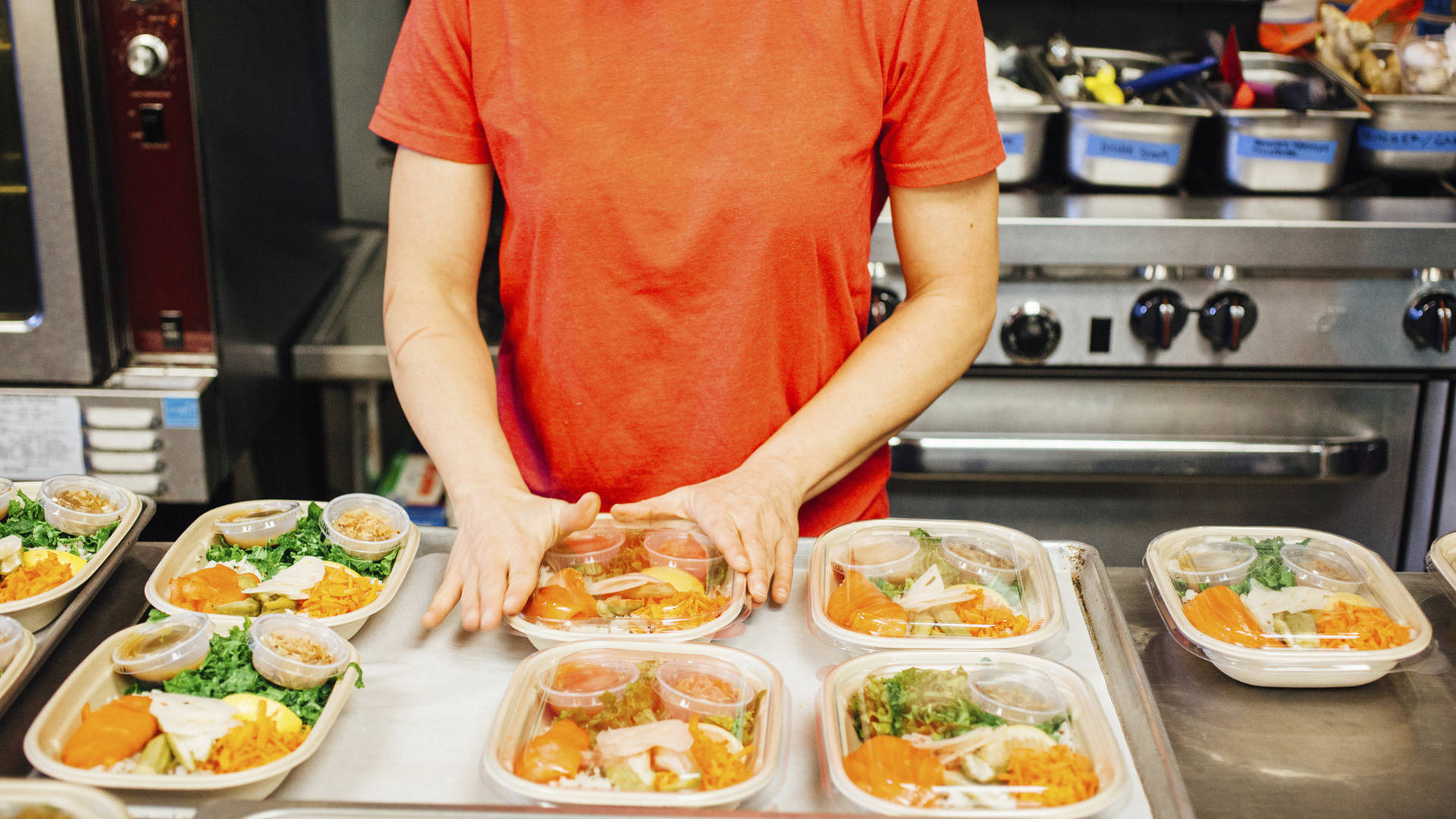
Eating more can help you lose weight
“A lot of people consume low-calories diets and then say they can’t understand why they’re not losing weight,” says Saladino. “But if you’re only eating, say, 1,200 calories, you can’t remove any more calories if you want to function. Sometimes, you have to reverse diet instead, and that means eating more.”
While a car will simply stop working if you don’t fill it with fuel, Saladino says the human body is much smarter, because it starts to recognise a reduction of calories, and then starts adapting for the calories it’s receiving.
‘If you suddenly pull 1,000 calories from your diet a day, your body will definitely realise you’re not giving it enough food, and it won’t be able to provide you with the energy you need to function, let alone train,” he explains. ‘In short, you have to stop running your body so aggressively.
“If I’m someone who needs 3,000 calories just to train and function and do everything I need to do, and I suddenly drop to 2,000 calories a day, weight loss could happen in the beginning, but after a period of time on that lower number, my energy levels and sleep quality will drop, things will start going wrong in my body hormonally, and in turn, I could start putting on body fat.”
Having been on over a dozen magazine covers himself, Saladino admits that while he does maintain a strict diet to get in shape, he never ever goes into restriction, revealing that he did his last three covers on a diet of around 275 grams of protein, 300 grams of carbs, and around 90 grams of fat a day.
“If you think about it, that’s more than most people eat in a day, and that was me being strict with myself and not having cheat meals, but eating enough through the day is key to fueling the body properly and getting the metabolism to run more efficiently. If you’ve fallen into a rut of not eating breakfast, it isn’t because you’re ‘not a breakfast person’. It’s because you’ve trained your body to live without having breakfast for most of your life. To get your body running efficiently, you need to train it out of those bad lifestyle habits you’ve picked up.”
Ditch junk food to lose (or gain) weight
Saladino says his number one goal with every client is for them to be healthy, whether they have to lose body fat for a role or put it on.
“When actors tell me they need to get heavy for a role, I’ll say okay, but I’ll say we’re not doing it with junk food,” says Saladino. “We’ll do it with exercise and by increasing their calories, but they must be the right kind of calories, because the idea that all calories are equal is nonsense. If I was to feed myself 3,000 calories of nutritious food or 3,000 calories of fast food a day, are you going to tell me I wouldn’t feel a difference? Of course I would!”
Instead, the PT encourages eating lots of good quality proteins and fats, along with fibrous, slow-releasing carbs such as sweet potatoes, brown rice, and quinoa to fuel the body, ensure good sleep and, most importantly, keep the heart healthy.
“Eating cheat meals here and there on top of a balanced diet is far healthier than eating complete crap for the next eight months, which is what a lot of actors do,” he points out. “And a lot of the time, they don’t put on the weight they need to – they just feel like crap. I never want my clients to feel out of shape because you always need to think about them transitioning out of that role and into the next one. For that reason, I always like them to maintain a baseline of health and fitness.”
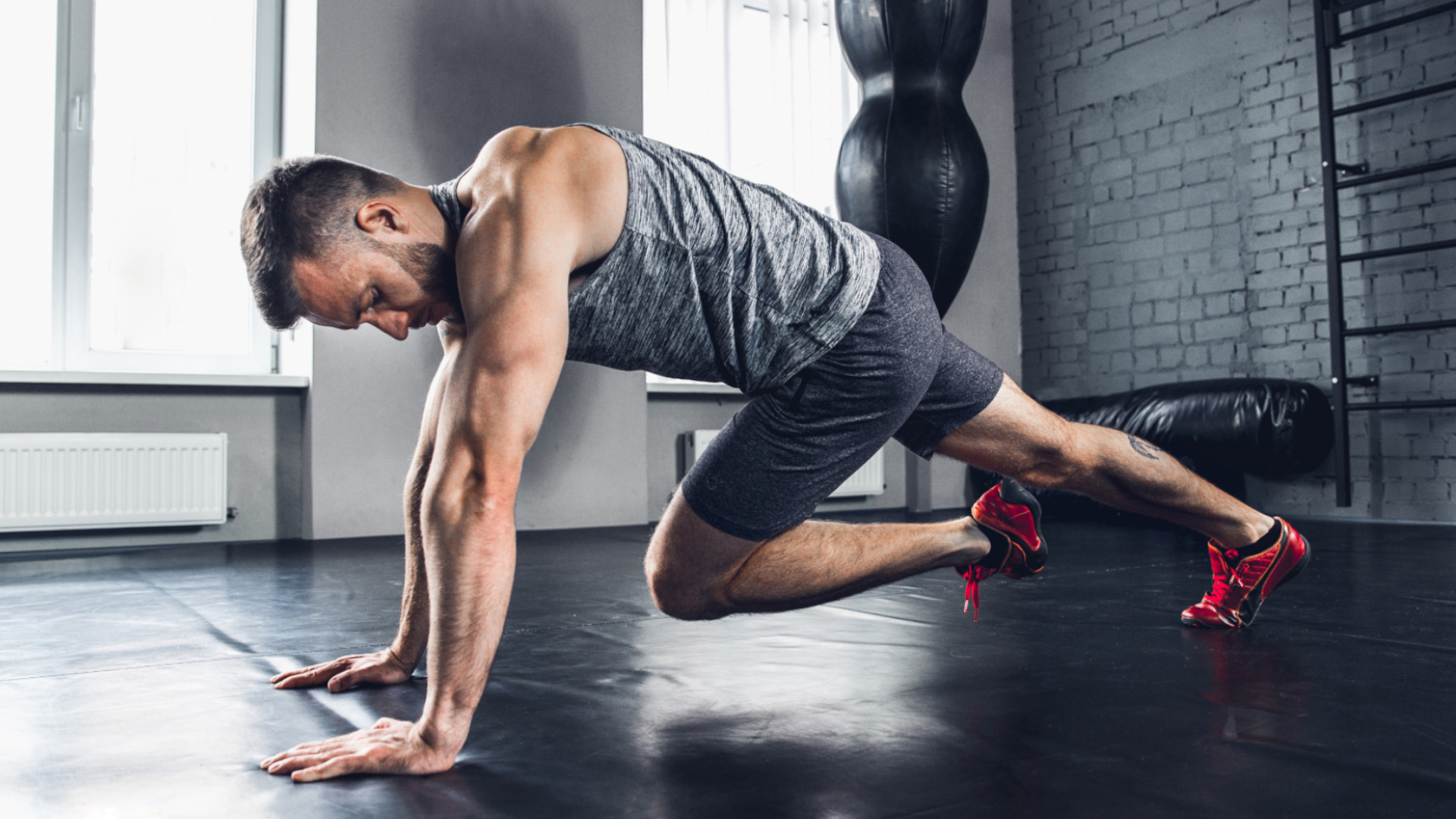
Slow and steady wins the race
Aside from resistance training and mobility work, the last piece of the fitness puzzle for getting in superhero shape is cardio – but probably not how you imagined.
“Ryan didn’t pound the cardio throughout all three Deadpool programmes,” says Saladino. “Instead, we really focused more on getting steps in, aiming in the range of 10,000 to 15,000 steps a day to enhance his recovery and sleep, and because you can burn a lot of fat when you’re working in zone 2, which means doing steady state cardio around the 120-150bpm range.”
Saladino adds they “would occasionally come in and do some higher intensity interval training, maybe once or twice a week, but it would only last between five and ten minutes. Science might point people in the direction that you burn more fat doing HIIT, but I almost disagree at times. I think HIIT needs to be used in moderation, or you can hurt yourself. I believe maintaining a balance of the different types of cardiovascular training is very important.”
Learn to hack your metabolism
You might think you’re eating healthily in your quest for a superhero bod, but if you’re always feeling hungry in the evening – or worse, binging on foods late at night – it could be a sign that you might not have the right ratio of proteins, carbs and fats in your daily diet.
‘People often think they need to pull carbs or fats from their diet for body recomposition, but removing any one of the three main macronutrients can play havoc with your body,” says Saladino. “Instead, you need to hack your metabolism and learn how to use your carbs and fats more efficiently as your energy source so you get a better response out of the foods you’re consuming.
“Because with a better response, you’ll sleep better, have higher energy levels to do more activity, and improve your mood, which can help with cortisol and stress levels. These are all examples of non-scale victories, and all of them can help with body recomposition.”
Saladino uses the Lumen device for daily insights into helping his body use carbs and fats more efficiently, which he says helps him get away from the scales and focus more on the day-to-day principles he needs to hit his goals.
“What I love about Lumen is it becomes a nutritionist in your pocket, giving people the nutrition tips and help they want to consume the nutrition they specifically need to consume. Because what Ryan eats or what I eat is irrelevant to anyone else. It’s about helping you find out what you need to eat every day to be successful, and that includes telling you when you need a boost day or re-feed to get your metabolism burning a little hotter.”
This feature is part of T3's Get Fit 2024 campaign. We’ll be bringing you a wealth of guides, features, deals and news to help you get healthy, fit and ready for anything the new year can throw at you. Whether you’re a newcomer to fitness or someone with a passion for it, we’ll bring you all the best workouts, diet advice and gear to set you on the right track.
Jo is a London-based freelance journalist and content creator specialising in fitness, health, lifestyle and beauty. With a degree in Journalism, Film & Broadcasting from Cardiff University and almost 20 years’ experience in the industry, she interviews celebrities and Olympians for a living, while testing out the latest beauty, hair, wellness and fitness gadgets. As a Level 3 Personal Trainer and author of several fitness guides, she gets to try the coolest workouts while reviewing active travel destinations and writing investigative features about the wonderful world of wellbeing for many of the UK’s top magazines, newspapers and digital publications. When she’s not sitting at her laptop, Jo likes exploring new walking spots with her beagle, gardening, and DIY. She is also one of the few people on the planet still obsessed with what’s coming up in Phase 5 of the Marvel Cinematic Universe.